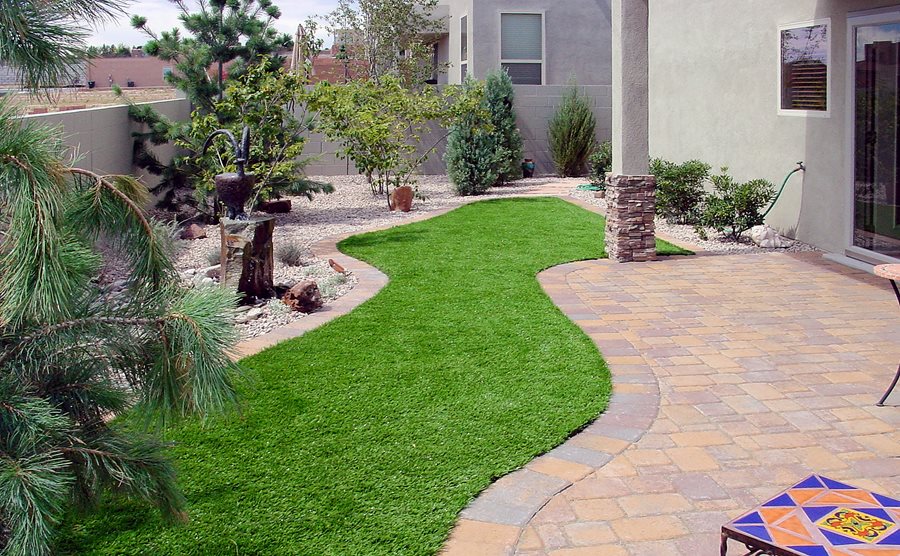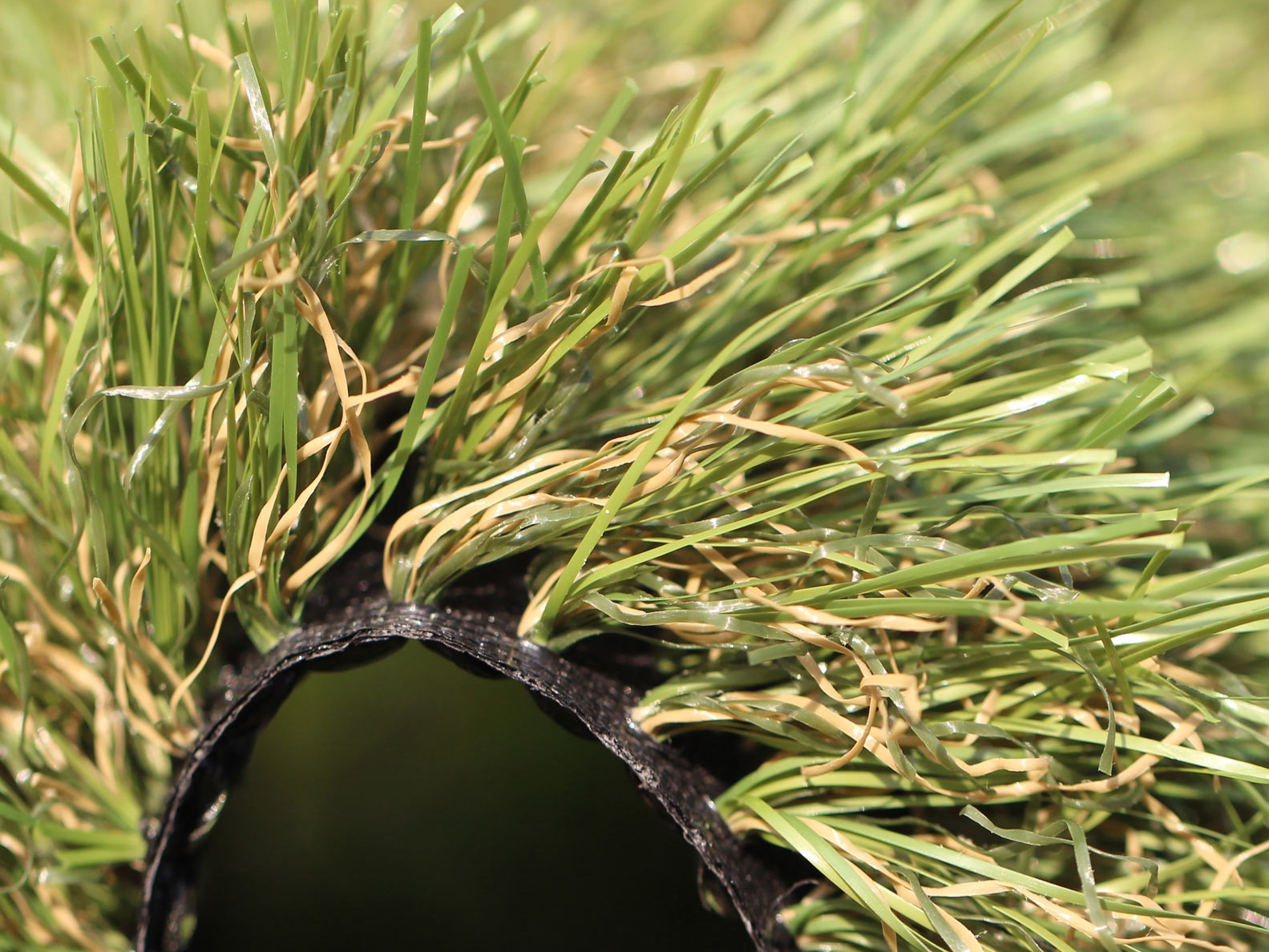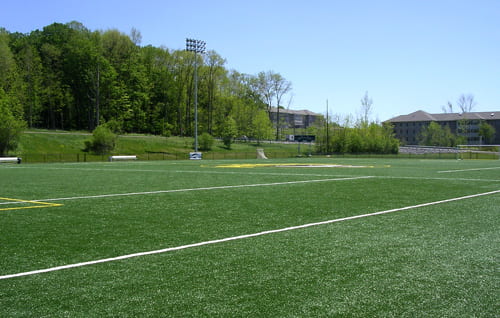See Why Homeowners Prefer Artificial Grass for Sustainable Landscape Design Practices
As property owners significantly prioritize sustainability in landscaping, synthetic grass has actually arised as an engaging option to standard lawn. What continues to be to be discovered is the complete scope of advantages that artificial grass can use to home owners and the environment alike.
Water Preservation Conveniences
Among the most considerable advantages of artificial grass is its function in water preservation. Standard yard lawns need considerable amounts of water to maintain their lush look, commonly causing overuse of neighborhood water resources, particularly in deserts. On the other hand, artificial grass eliminates this demand entirely, as it does not need irrigation. This not only conserves water but also minimizes the strain on community water systems, specifically during drought problems.
Moreover, the installation of synthetic grass can contribute to an extra sustainable landscape. House owners can dramatically lower their water bills, allowing for reallocation of sources to various other environmental efforts or family uses. Furthermore, synthetic grass is developed to hold up against different climatic problems without the need for additional watering, making it an optimal selection for areas facing water scarcity.
The ecological benefits extend beyond immediate water savings. By reducing water consumption, fabricated grass helps to reduce the impacts of environment modification, protecting important communities that are endangered by extreme water extraction. As lasting landscaping techniques acquire grip, synthetic grass emerges as an accountable option for homeowners seeking to produce environmentally friendly outside rooms.
Decreased Upkeep Efforts
Synthetic grass dramatically lowers maintenance efforts compared to conventional lawn yards. With man-made grass, homeowners can remove the taxing jobs connected with natural landscaping, such as mowing, fertilizing, and weeding. This not just conserves valuable time yet also decreases physical labor, making grass care accessible for people of every ages.
Typical yards need constant cutting to maintain a visually pleasing height, whereas synthetic grass continues to be constantly rich without the need for cutting. Additionally, property owners no much longer require to apply chemicals or plant foods, which are frequently called for to keep natural turf healthy.
Additionally, fabricated lawn is resilient and resistant, needing very little maintenance past occasional cleaning and rinsing to get rid of particles. This ease of upkeep allows house owners to appreciate their outdoor spaces without the continuous worry of upkeep, offering even more time for recreation and household tasks. Ultimately, the decreased maintenance efforts related to synthetic grass make it an appealing option for those seeking a low-maintenance, aesthetically appealing landscape.

Ecological Influence Decrease
There is a growing recognition of the ecological advantages associated with man-made grass, especially in terms of water conservation and reduced chemical use. Typical yards need significant quantities of water, specifically in drought-prone regions, resulting in enhanced stress on local water sources. On the other hand, synthetic lawn gets rid of the need for watering, dramatically minimizing water consumption and advertising sustainability.
In addition, conventional yard upkeep typically involves the application of herbicides, pesticides, and plant foods, which can add to dirt and water contamination. Synthetic grass mitigates this ecological risk by needing minimal upkeep and basically eliminating the need for dangerous chemicals. This not just boosts dirt health yet additionally shields local ecosystems from toxic overflow.
In addition, the production of natural yard lawns commonly involves the use of fossil fuels for mowing and landscaping devices, more adding to greenhouse gas discharges. By choosing man-made lawn, home owners can dramatically reduce their carbon footprint associated with lawn care tasks.
Aesthetic Appeal and Versatility
Along with its ecological benefits, synthetic grass uses significant aesthetic allure and versatility for landscape design. House owners can achieve a lush, eco-friendly appearance year-round, getting rid of the seasonal variations typically related to all-natural lawn. This consistent visual not only enhances the aesthetic charm of a residential or commercial property yet also adds to a sleek and properly maintained look.
In addition, artificial grass is readily available in a selection of designs, appearances, and colors, permitting for personalization to fit private preferences get redirected here and style styles - Arizona artificial turf. Whether utilized in household gardens, business areas, or entertainment areas, it can effortlessly integrate right into varied landscape design designs, from contemporary minimal to lush exotic settings
The adaptability of synthetic grass expands beyond simple appearance; it can be installed in various locations, consisting of rooftops, patio areas, and also interior areas, developing chances for special landscape design services. In addition, it appropriates for a series of activities, from youngsters's backyard to pet-friendly atmospheres, giving capability without compromising design.
Ultimately, the visual allure and versatility of synthetic grass make it an attractive option for homeowners looking for lasting landscaping options that do not give up elegance for environmental duty.

Long-Term Price Savings
One of the most engaging benefits of synthetic grass is its capacity for long-lasting cost financial savings. Unlike natural turf, which needs routine upkeep-- including mowing, watering, fertilizing, and bug control-- synthetic grass significantly decreases these recurring expenses. Property owners can save a significant amount on water expenses, specifically in areas where water anonymous shortage is a pressing problem. The elimination of yard treatment services additionally adds to monetary cost savings, as there is no demand for specialized devices or labor.
Additionally, synthetic grass has a lifespan of 15 to 25 years, relying on its quality and use. This sturdiness reduces substitute prices, making it an extra economical choice in the long run. Moreover, the first investment in synthetic grass can typically be recovered with the savings accrued in time.
While the ahead of time expense may appear greater contrasted to turf setup, the cumulative savings from decreased upkeep and water use usually surpass these first expenses. Inevitably, the fostering of synthetic grass not only advertises a sustainable landscaping remedy but likewise offers homeowners a monetarily wise option that straightens with long-term budgeting objectives.
Final Thought
Man-made turf emerges as a compelling alternative for lasting landscape design, providing considerable advantages in water conservation, minimized upkeep initiatives, and reduced ecological impact. As communities significantly prioritize ecologically pleasant practices, the fostering of artificial lawn stands for a modern action toward attaining resistant and lasting landscapes.
In addition, fabricated lawn is created to withstand different weather conditions without the need for extra watering, making it an excellent choice for regions dealing with water scarcity. (Artificial turf companies phoenix)

Synthetic lawn emerges as a compelling alternative for lasting landscaping, offering substantial advantages in water preservation, lowered maintenance initiatives, and reduced environmental impact.